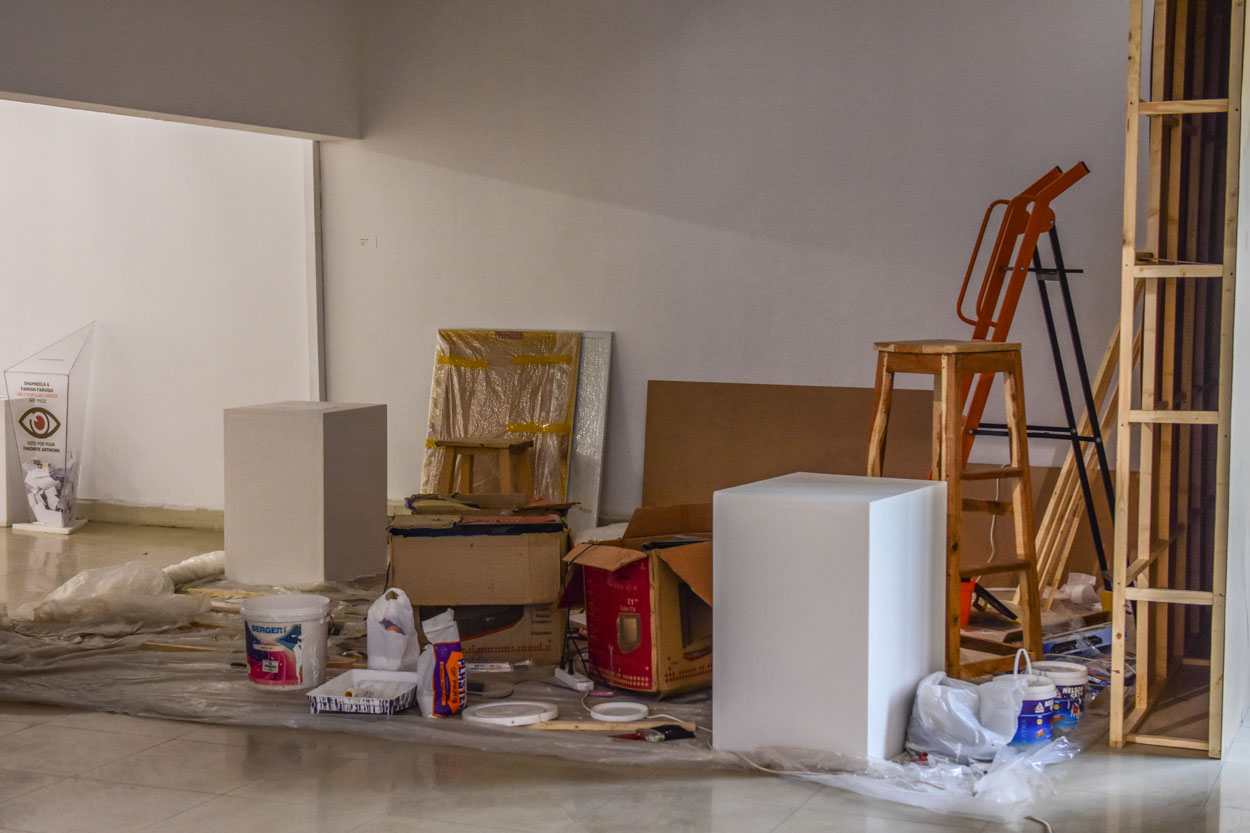Imran Channa
Born in 1981 in Shikarpur (Pakistan)
Lives and works between Lahore (Pakistan) and Maastricht (The Netherlands)
Imran Channa completed his BFA at the National College of Arts, Lahore, wherefrom he also obtained an advanced degree in 2008. Channa’s work has been shown across the world in numerous exhibitions at venues such as: The House Mill, London; Marres Museum, Maastricht; and Artport, Tel Aviv, as well as international art fairs, including the Third International Festival of Contemporary Art at the Museum of Modern and Contemporary Art Algeria and Art Basel Hong Kong. He has had solo shows at Koel Gallery (Karachi) and the Mohatta Palace Museum (Karachi), and received the ‘Award of Excellence’ by the Artists’ Association of Punjab in 2013. He is currently participating in an artistic-research residency program at the Jan van Eyck Academie, Maastricht (The Netherlands), and teaches at the National College of Arts, Lahore. Channa’s primary artistic interest is in historical documentation; how it creates narratives and provides a vehicle for erasure, simultaneously a source of information and information. His multi-medial approach uses drawing, moving image, installation and digital technology as a means to re-examine historical documents and their influence, inviting audiences to contemplate the contradictions of how we record and understand history.
Imran Channa’s installation for the Karachi Biennale 2017, The Great Wall, explores the concept of the wall, not only as defining physical space but also confining ideologies, an embodiment of the dialectic tension between concealing and revealing. The project plays with the idea of creating a wall, used to establish and divide physical and ideological space on the basis of socio-political history, religion and culture. The disrupted nature of the physical manifestation of the installation explores questions of the constraints of context on the artistic process, treated by the artist as a metonym for the effect of socio-political conditions on creative thought and output more generally. Channa’s wall exists, like all walls, in a very specific, finite plane of time, as the artist himself says: “It explores and records the discursive traces of time.”

The Great Wall, 2017.
Installation
Dimensions variable

